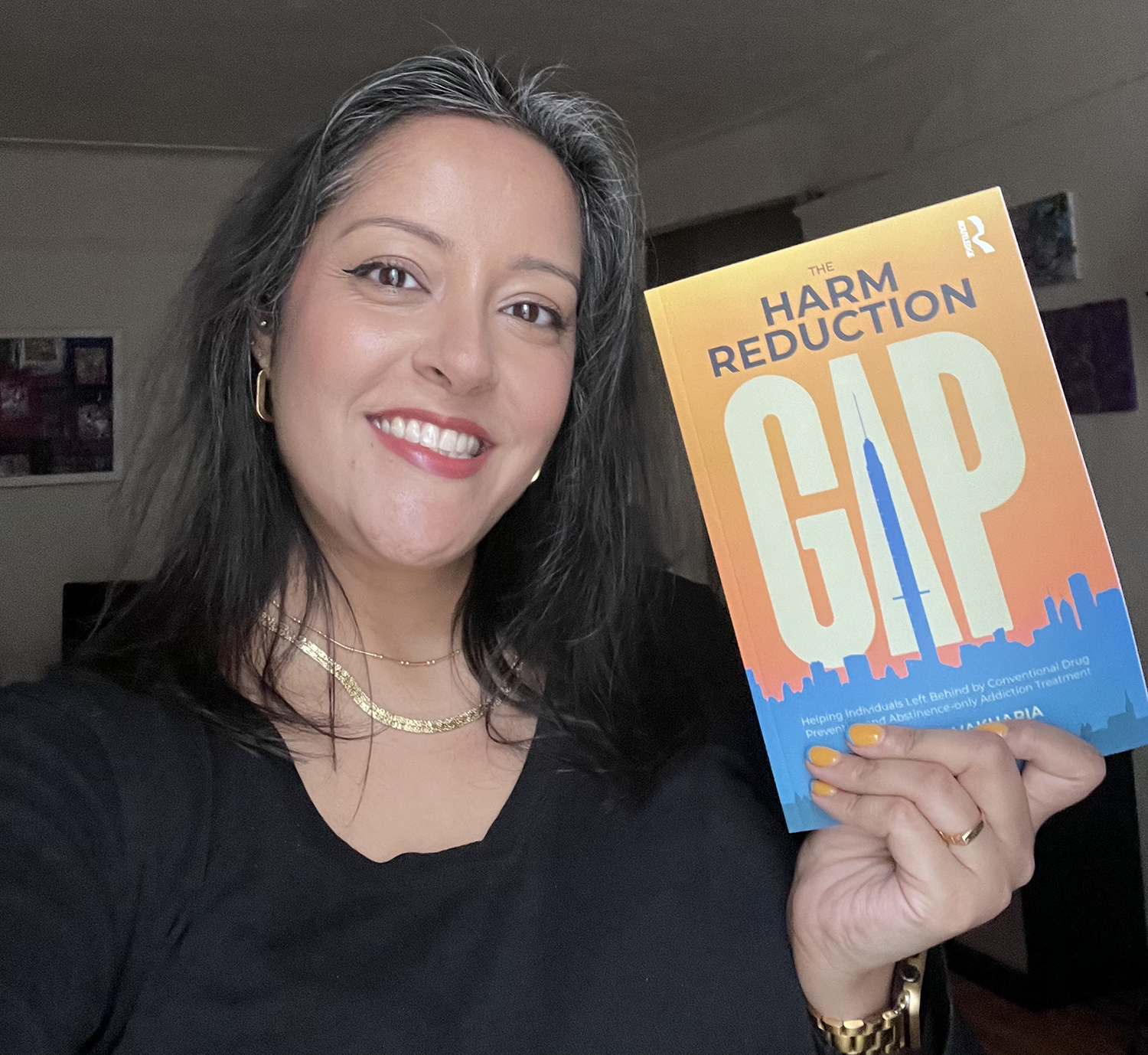The unprecedented overdose crisis we are experiencing in the United States has made conversations about a public health harm reduction approach more urgent than ever. Although the harm reduction response to drug use has gained traction over the past decade, most evidently with the widespread uptake of naloxone, other strategies such as syringe service programs and overdose prevention centers remain controversial. Yet essential and effective harm reduction interventions are sorely needed, Dr. Sheila Vakharia argues in her new book, The Harm Reduction Gap.
Vakharia pulls from her vast experience, which led her to see a fundamental gap in the continuum of care for people who use drugs. She weaves personal anecdotes and reflections into the book—such as when she participated in the “Just Say No” and D.A.R.E. drug prevention education approaches prevalent in schools the 1980s and 1990s, and worked as a clinical social worker at an abstinence-only addiction treatment facility. For the past six years, she has been Deputy Director of the Department of Research and Academic Engagement at Drug Policy Alliance.
Over the course of her career, Vakharia came to view the gap in our continuum of care as a harm reduction gap. It is a gap into which millions across the U.S. fall every day because they lack the knowledge, skills and tools they need to stay safer when using drugs, whether legal or illicit. It is a gap that includes people engaging in experimental use, social use and recreational use. And it’s a gap for people experiencing substance use problems, since evidence shows us that 90% or more of them will never step into a treatment facility.
Vital Strategies spoke with Vakharia about what she hopes to accomplish with her book, some misconceptions about harm reduction and how we can help end the overdose crisis.
What do you hope to accomplish with this book?
We are at a moment in the United States when the stark evidence is ubiquitous that our status quo response to drug use is not working. People are dying of drug overdose at unprecedented rates. People continue to die and face preventable harm because our systems of care are ill-equipped to deal with the needs of our communities.
I wanted to write a book that shows there is another way—an approach to addressing substance use that is not moralistic, that is not “one-size-fits-all,” and one that acknowledges that people are capable of making safer, healthier choices for themselves when they are armed with the knowledge, tools and strategies to do so.
This book is meant to introduce community members, voters, family members and friends to the concept of harm reduction by showing the essential role it can play in our current systems of care. I explain its history and its foundational tenets, clarify and distinguish it from other approaches, and attempt to make clear how it is a much-needed addition if we truly want to save lives and help our communities.
Can you share your concerns about what happens when harm reduction language and limited strategies are taken up by a wider array of actors?
While the majority of Americans have probably never heard of the term “harm reduction,” it is becoming more widely used in some communities and by a diverse range of actors. Harm reduction tools are becoming incorporated into the work of government health services, law enforcement, health care professionals, and traditional treatment providers. But just because someone can provide a harm reduction intervention does not make them a harm reductionist. And it doesn’t necessarily mean they want to work with people who use drugs.
For instance, naloxone (the opioid antidote medication) is now in the hands of law enforcement officers across the nation who often respond to 911 overdose calls. Yet research shows that it has not reduced stigma toward people who use drugs, including among law enforcement officers. Another example: pharmacists in many states can legally sell sterile syringes to people who use drugs without a prescription, but many still refuse to do so.
In addition, as more syringe service programs are integrated into public health departments, we also recognize the risk of these services becoming institutionalized. This trend poses a danger for harm reduction. It threatens to water down the radical roots of the harm reduction movement itself. It overlooks the fact that any harm reduction approach must be guided by an ethos of compassion and care. And the biggest danger of all is that it risks diverting funds and resources away from the groups and entities doing the most impactful work into the coffers of established and often well-funded mainstream entities who co-opt our hard-fought victories.
Unlike in most academic books, you used your own personal experience and wove in your own stories throughout. Why did you make that decision?
I wanted to write a book that would appeal to a broad audience of community members who may not otherwise pick up an academic book about drugs. To do so, I had to remember what makes reading fun and engaging; often it is feeling connected to the author and understanding their connection to the issue. I wanted to share my own experiences with drug prevention, treatment and harm reduction because I also wanted to show that I wasn’t “born” a harm reductionist. Most of us aren’t, I don’t think. And that’s okay. Often our experiences change our thinking, beliefs and understanding. I hope that witnessing my evolution helps people to reevaluate their own experiences and consider there may be another way to help ourselves and our loved ones.
